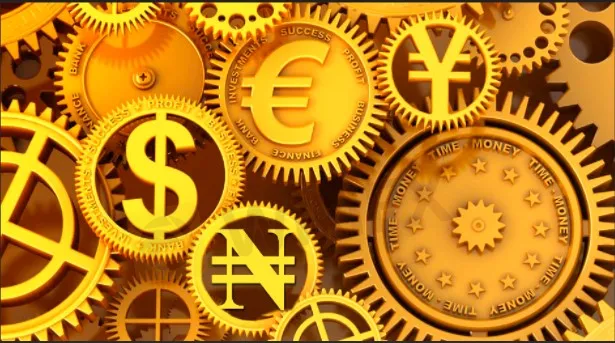简体中文
繁體中文
English
Pусский
日本語
ภาษาไทย
Tiếng Việt
Bahasa Indonesia
Español
हिन्दी
Filippiiniläinen
Français
Deutsch
Português
Türkçe
한국어
العربية
Caution: Trends in the Foreign Exchange Market
Abstract:Dollar, Mexican peso, canadian dollar
The recent themes in the foreign exchange market continued last week. On the one hand, the dollar-bloc currencies and Norwegian krona trended higher, while the euro, and especially the yen, traded heavier. On the other hand, although some critics argued that the Fed's 25 bp rate hike earlier this month was too timid, the Fed is signaling it could accelerate the pace. The interest rate adjustment continued in dramatic fashion.
The Fed funds futures imply almost a 77% chance of a 50 bp move at the next meeting (May 4). The general resilience of the US economy, the tight labor market (with weekly initial jobless claims falling to new lows since the late 1960s) and upticks in the flash PMI may embolden the Federal Reserve. The two-year note yield has risen by 50 bp since Russia invaded Ukraine, and it is not done. The consensus that appears to be developing at the Fed favors a march toward neutrality, seen in 2.25%-2.50% by the vast majority of Fed officials. The two-year note yield is near 2.2%, up from a little less than 0.75% at the end of last year. More than half of the Fed officials and economists think the target rate will have to rise above neutral to counter the inflationary pressures.
A few trends in the foreign exchange market are worth noting. First the yen's weakness. The dollar has risen in 13 of the past 15 sessions against the yen. The rise in US yields and the lack of official resistance appear to have spurred and sustained the move. BOJ's Kuroda was still finding good things to say about the yen's slide ahead of the weekend. Second, the dollar bloc is on fire. The Canadian dollar has strengthened for nine consecutive sessions and 13 of the past 14. Rising commodity prices, the reduction of the US premium at the short-end, and the policy mix, following the Liberal-NDP pace, lend support to the Canadian dollar. The S&P 500 has advanced in seven of the past nine sessions, and this proxy for risk appetites underpinned the Loonie. The Australian dollar has rallied in 10 of the past 13 sessions. Its 3.5% appreciation this month leads the majors. The New Zealand dollar's advance may not be as impressive, but its 2.8% gain against the greenback puts it in second place this month.

Disclaimer:
The views in this article only represent the author's personal views, and do not constitute investment advice on this platform. This platform does not guarantee the accuracy, completeness and timeliness of the information in the article, and will not be liable for any loss caused by the use of or reliance on the information in the article.
Read more

A Must-To-Watch Top Trading Pairs This 2025
Discover the top trading pairs to watch this week, including Bitcoin, Euro, USD, and more. Market trends, key resistance levels, and price movements analyzed.

Immediate Edge Review 2025: Is it safe?
Launched in 2019, Immediate Edge claims to be an automated cryptocurrency trading platform using AI technology for crypto trading services. The platform requires a minimum deposit of $250 to begin trading, which is relatively expensive for many investors. During its short operation, Immediate Edge failed to establish a positive reputation. The platform has undergone frequent domain changes and has repositioned itself as an intermediary connecting users with investment firms—a move that appears designed to obscure its actual operations. Immediate Edge restricts services to investors from the United States; it remains accessible to users in other regions.

Best Binary Options Indicators: Enhance Your Trading Strategy
Binary options trading involves predicting whether an asset's price will rise or fall within a specific timeframe. Unlike traditional investing, more specifically, binary options demand rapid decisions due to fixed expiry times (e.g., 60 seconds to 1 hour). For instance, speculating if EUR/USD will be above 1.0800 in the next five minutes. Success yields a fixed payout, while failure results in the loss of invested capital. Binary indicators distill complex market data—price action, volume, volatility—into actionable signals tailored for short-term trades. Indicators act as a compass, guiding traders to trends, reversals, and optimal entry points, thus enabling traders to detect market shifts for higher-probability decisions.

Olymp Trade Review 2025: Is It Safe to Trade With?
Founded in 2014, Olymp Trade has been operating for over a decade, expanding its services and user base considerably, now offering focused trading in fixed-time trades (previously known as binary options in some regions) and Forex. Specifically, Olymp Trade operates two trading modes: fixed-time trades and forex mode. Fixed-time trades refer to trades with predetermined expiration times, where traders predict market movement directions. Payouts typically range from 70-90% of the investment amount. Forex Mode is a more traditional forex trading approach with variable leverage (up to 1:500 for experienced traders). At the same time, it allows for more sophisticated trading strategies with customisable take-profit and stop-loss orders.
WikiFX Broker
Latest News
The Withdrawal Trap: How Scam Brokers Lure Victims into Paying More
FCA to Investors: Think Twice Before Trusting These Brokers
Trump\s tariffs: How could they affect the UK and your money
Trump gambles it all on global tariffs he\s wanted for decades
TradingView Brings Live Market Charts to Telegram Users with New Mini App
Trump tariffs: How will India navigate a world on the brink of a trade war?
Interactive Brokers Launches Forecast Contracts in Canada for Market Predictions
Authorities Alert: MAS Impersonation Scam Hits Singapore
IG Group Acquires Freetrade for £160M to Expand UK Investment Market
U.S. March ISM Manufacturing PMI Released
Currency Calculator







